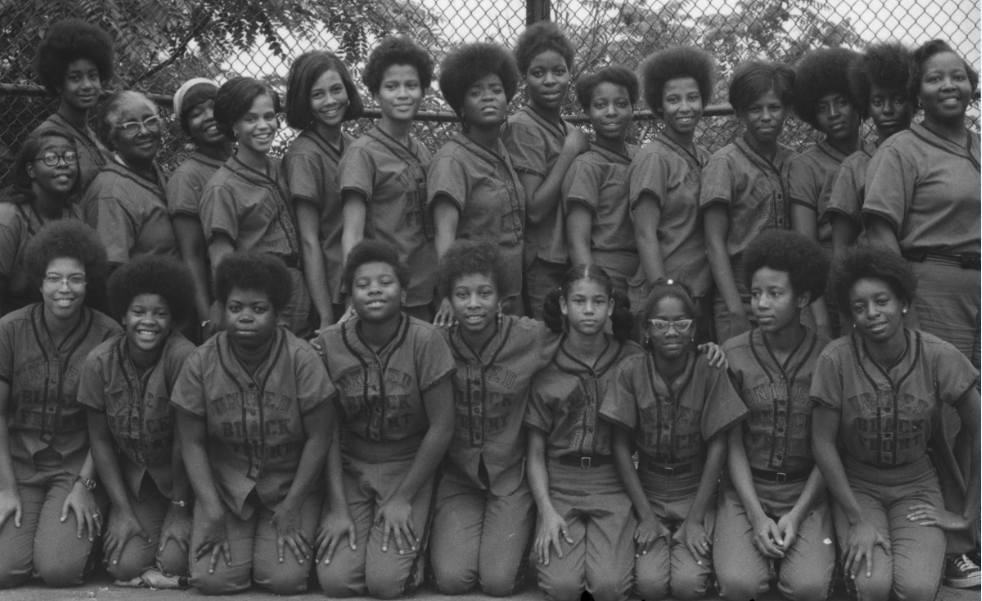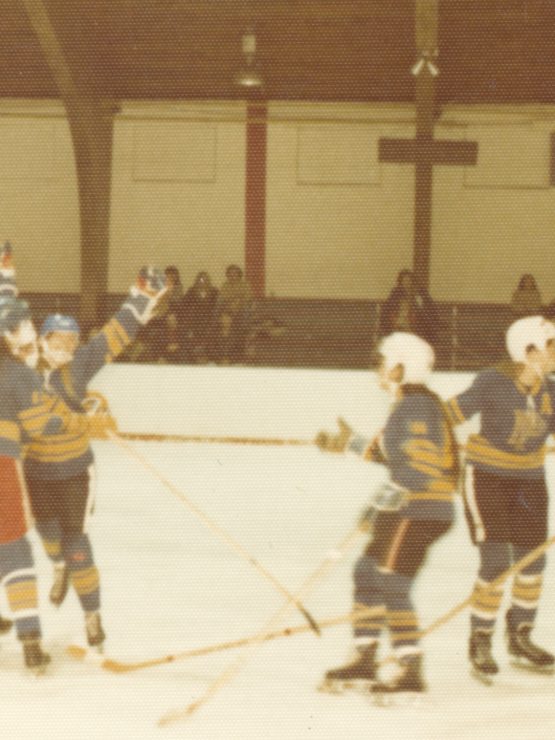“Title IX has done more for women than anything since the 19th Amendment…I thought from the very beginning the most valuable results of Title IX would come through academic equality, only a small part of the student body has a chance to play athletics.”
Former U.S. Senator Birch Bayh (1)
The enactment of Title IX 50 years ago today on June 23, 1972, impacted opportunities for females nationally and in our region. Though many people think of Title IX as a measure that only effects the participation of girls and women in sport, the mandate is broader. Designed to update Title VII of the Civil Rights Act of 1964, the measure reads “No person in the United States shall, based on sex, be excluded from participation in, be denied the benefits of, or be subjected to discrimination under any education program or activity receiving Federal financial assistance.” The act prohibits gender-based discrimination in any educational institution or by any educational program that receives federal funds. (2)

Introduced at a time when the Equal Rights Amendment had gained national attention and women activists had organized for economic and social change, the legislation sought to fundamentally reorder education. In 1971-72 women received 44% of bachelor’s degrees, 41% of masters, 16% of doctoral degrees, and only 6% of all first professional degrees such as medical, dental, and legal degrees. Awarded half the number of college scholarships that men received, the amount of financial aid allocated to women was also substantially smaller. By the 1999-2000 school year, parity at the college level had been achieved or surpassed on many levels, women received 57% of bachelor’s degrees, 58% of masters, 44% of doctorates, and 45% of professional degrees. (3)

Title IX also reordered organized athletics. Girls and women had participated in sports for decades before the passage of the measure, but their opportunities, as well as funding, remained limited. Many of the organizations that encouraged female participation were community based, with recreation centers and organizations such as the YWCA sponsoring teams. A member of the Ammon Recreation Center’s volleyball team, Mildred Allen recruited young women from the Hill District to play on her softball team, the Satellites. They competed in the Tri Boro League she helped establish in 1960 against teams from Homewood, Garfield, and other city neighborhoods.

Other teams such as the Pittsburgh Pennies ice hockey team benefitted from parents and family members who founded the team and raised funds, so their daughters had the chance to participate in sports. Founded in 1972, the Pennies came of age during the era of Title IX when opportunities in sport began to expand for women. One of the earliest organized teams for girls and women in the area, the Pennies grew from five players to a roster of almost 30 in the first two years. The team travelled to Canada, Buffalo, and Philadelphia for games or sometimes played boys high school teams for competition. But even as opportunities to play have expanded, there are now high school, club, college, and elite amateur teams training players and offering a range of competitive opportunities, girls and women have struggled to find parity in the sport. Olympic ice hockey goalie Brianne McLaughlin played on boys’ teams until her junior year in high school, when she found a travel team about an hour away from her Elyria, Ohio home. Recruited by Robert Morris she joined the University’s team for its inaugural season of 2005-06.

While opportunities continue to lag, Title IX has changed the overall landscape for female athletes. In 1972 about 294,000 girls participated in interscholastic high school sports in the U.S., making up about 7% of all high school athletes. That number ballooned to almost 3.5 million by the 2018-19 school year, about 43% of all athletes. (4) The impact is the same at the college level, participation has grown from 30,000 female competitors (15%) to more than 200,000 (44%). College budgets have also grown for women’s programs, from 2% in 1972, with almost no money allocated for scholarships, to about 40% by 2010. (5)
Prior to the enactment of Title IX, the WPIAL managed few organized activities for female athletes. While boys could compete for a WPIAL championship in basketball beginning in 1909, and football and baseball by 1914, Rifle became the only sport awarding championships to girls in this earlier era. Mixed team championships (girls and boys) in the sport began in 1942. Munhall High School, a regional powerhouse, won 23 championships between 1942 and 1969, as well as garnering multiple state and national wins. Yearbooks from the school document the prominent role of girls on these teams. (6)

Staff at other WPIAL schools organized competitive opportunities for female students before Title IX. Alfreeda Goff, a physical education teacher at East Allegheny High School and pioneer in athletic administration, began a girls track team in 1969. More than 100 girls showed up for the first day of practice. Goff later recalled, “It was something new and the girls didn’t have any teams yet, not even basketball.” (7) Concurrently, Ruth Ann Burke, a teacher in Peters Township, and Donna Shaver, from Mt. Lebanon, organized a league for girls, the WPAGL, in 1970 to provide competitive play. The Western Pennsylvania Girls Athletic League, a “sister” organization to the WPIAL, offered tennis and softball in the spring season of 1970, then grew to nine sports the following school year. Within five years, the two leagues had joined together and the WPGAL became the “WPIAL Girls Division,” a first step toward equity between boys’ and girls’ sports.
As the passage of Title IX became more certain high schools in the region began to prepare, recognizing the wave of change that the Act would bring. Mount Lebanon Athletic Director Glenn Aston-Reece recalled planning undertaken in advance of the law’s passage so, “by the time it went into force we were totally in compliance.”(8) The WPIAL swiftly instituted a structure of competition for girls’ sports. Within three years, they awarded championships in Rifle (1942), Basketball (1971), Softball, Swimming and Diving, and Volleyball (1973), Cross Country (1974), and Golf and Tennis (1975). By tracking sports and champions, the growth of high school girls’ athletics becomes obvious, with increasing numbers of sports contended and participation by schools increasing. Today there are 14 different interscholastic sports awarding medals to girls in the WPIAL.
The regional story of intercollegiate competition by women at the university level is similar. Women’s varsity basketball at the University of Pittsburgh actually began during the 1914–1915 season continuing until 1926–1927 when it was disbanded, and play was relegated to the intramural level. Reinstated as a varsity sport during the 1970–1971 season, athletes received varsity letters and competed intercollegiately, but the program was not managed by the Athletic Department until the 1974–1975 season. The university offered few varsity level opportunities for women until later in the 1970s and into the 1980s.
Dedicated activists here in Western Pennsylvania have long advocated for equal opportunities for women and for the passage of Title IX and all it mandated. Though the road to gender equality in education has been a bumpy one, the impact of Title IX has been vast. Legions of girls and women have benefitted from the doors it opened to classrooms and access it provided to competitive athletics. The stories of their achievements are being collected, preserved, and shared at the History Center and in the Western Pennsylvania Sports Museum. We acknowledge that the struggle to achieve the full promise of the legislation continues. But it is worth recognizing where women stand today, even if only to understand how much further they need to travel.
Footnotes:
- Pittsburgh Post-Gazette, “Education First: That’s What Authors of Title IX Had in Mind,” L.A. Johnson, October 6, 2002
Senator Bayh introduced the measure in the U.S. Senate and lobbied for its passage. - Pruitt, Sarah, “How Title IX Transformed Women’s Sports,” https://www.history.com/news/title-nine-womens-sports,,” June 11, 2021
- Pittsburgh Post-Gazette, October 6, 2002
- Data from the National Federation of State High School Associations
- Women’s Law Project, “Are Schools Giving Female Athletes a Sporting Chance? A Guide to Gender Equity in Athletics in Pennsylvania Schools,” https://womenslawproject.org/wp-content/uploads/2016/04/Title-IX, Revised April, 2016
- Munhall High School yearbooks, Detre Library & Archives, Heinz History Center and https://www.wpial.org/rifle/wpial-rifle-team-champions/
- The Pittsburgh Press, “Female Athletes Still Play Catch Up,” by Maria Siriano, May 15, 1984, p. 6
- Ibid.
